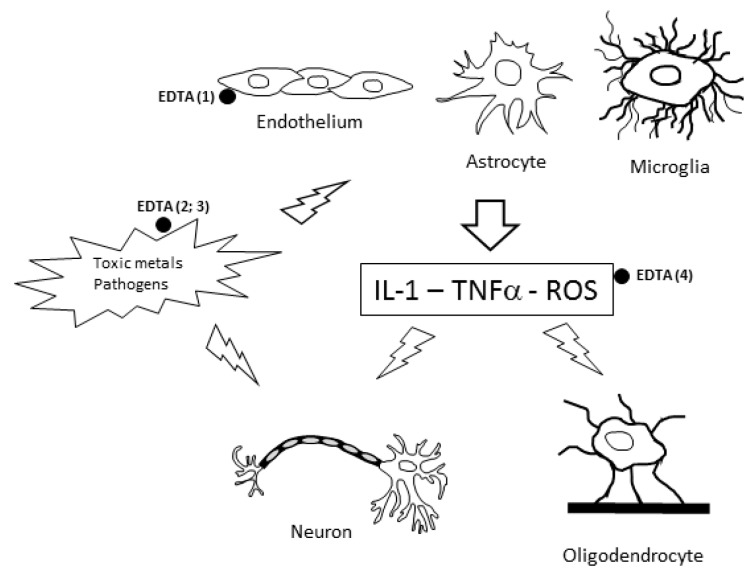Figure 1.
The proposed mechanisms underlying the efficacy of ethylenediaminetetraacetic acid (EDTA) chelation therapy against neurotoxicity. Toxic agents, (toxic metals, organophosphorus pesticides (OP), pathogens, air pollution, some drugs) can damage neurons and/or glial cells and endothelial cells directly (·). Activated glial cells and endothelium produce reactive oxygen species (ROS) and pro-inflammatory cytokines (IL-1, TNFα), which are able to further damage neurons. Treatment with EDTA (●) has the following effects: (1) Protection against endothelial activation; (2) removal of toxic metals; (3) possible anti-inflammatory functions (limiting pathogen infections and cytokine production); and (4) antioxidant activity (reducing ROS levels).

